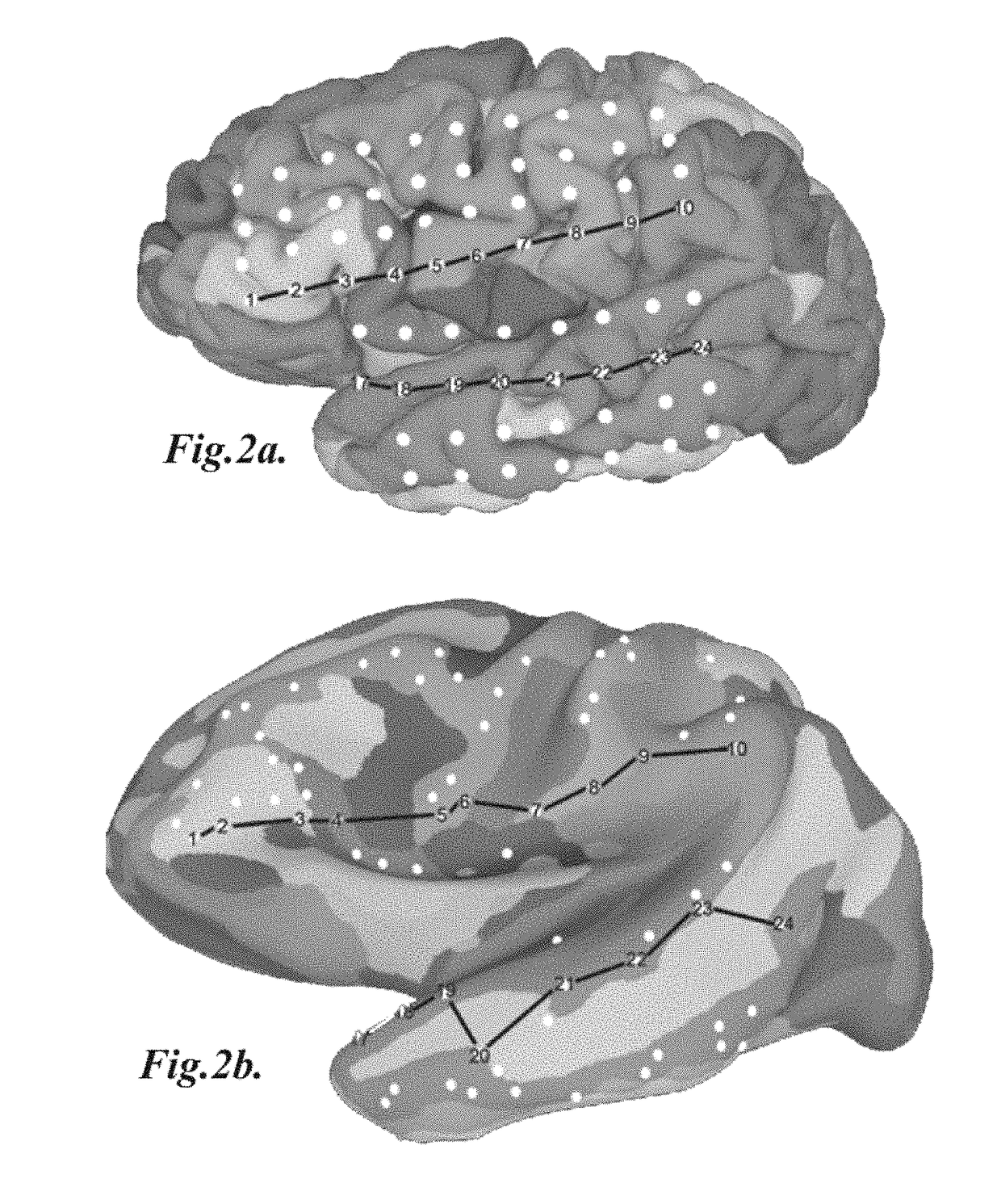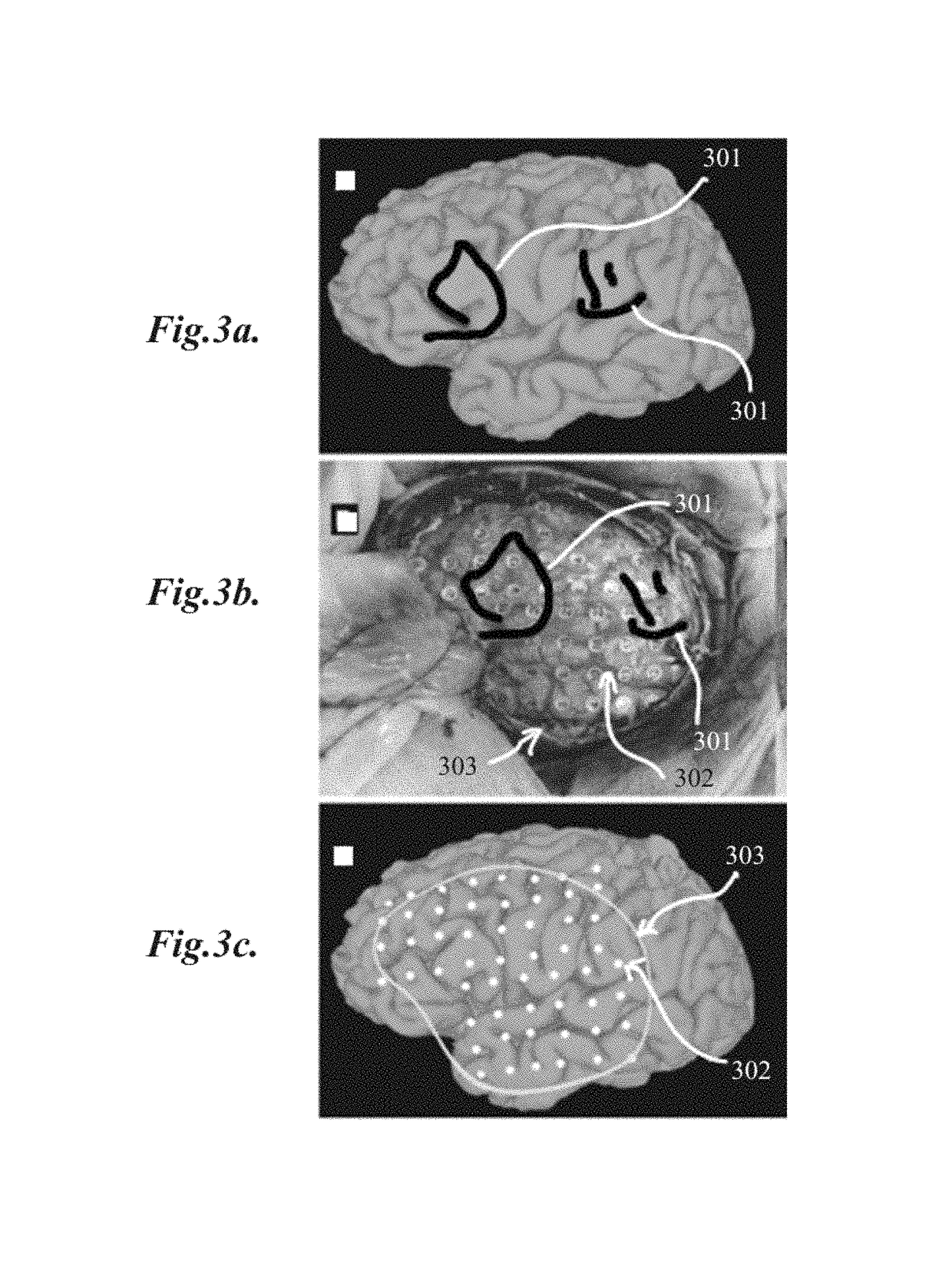Subdural electrode localization and visualization using parcellated, manipulable cerebral mesh models
a cerebral mesh model and subdural electrode technology, applied in tomography, instruments, applications, etc., can solve the problems of significant problems adversely affecting the accurate localization of electrodes located underneath the craniotomy, so as to achieve optimal electrical signal recording, accurate electrode placement, and correct identification of sites
- Summary
- Abstract
- Description
- Claims
- Application Information
AI Technical Summary
Benefits of technology
Problems solved by technology
Method used
Image
Examples
Embodiment Construction
[0045]The detailed description set forth below is intended as a description of the presently exemplified methods, devices and compositions provided in accordance with aspects of the present invention, and is not intended to represent the only forms in which the present invention may be practiced or utilized. It is to be understood, however, that the same or equivalent functions and components may be accomplished by different embodiments also intended to be encompassed within the spirit and scope of the invention.
[0046]Unless defined otherwise, all technical and scientific terms used herein have the same meaning as commonly understood to one of ordinary skill in the art to which this invention belongs. Although any methods, devices and materials similar or equivalent to those described herein can be used in the practice or testing of the invention, the exemplified methods, devices and materials are now described.
[0047]The present invention relates to methods for localization and visu...
PUM
 Login to View More
Login to View More Abstract
Description
Claims
Application Information
 Login to View More
Login to View More - R&D
- Intellectual Property
- Life Sciences
- Materials
- Tech Scout
- Unparalleled Data Quality
- Higher Quality Content
- 60% Fewer Hallucinations
Browse by: Latest US Patents, China's latest patents, Technical Efficacy Thesaurus, Application Domain, Technology Topic, Popular Technical Reports.
© 2025 PatSnap. All rights reserved.Legal|Privacy policy|Modern Slavery Act Transparency Statement|Sitemap|About US| Contact US: help@patsnap.com



